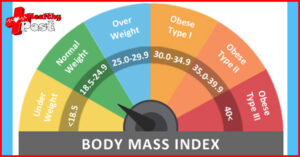
What is your waist size? Obesity means more than tight pants
“So what, I have a few extra kilos, who cares…” But it is precisely obesity that complicates the health of individuals and burdens the healthcare system more than we think at first glance. And it is a serious problem – according to the State Health Institute, 25% of Czechs and 22% of Czechs are obese. In the middle-aged population, even more than 50 percent of people suffer from obesity.

In short, obesity doesn’t just mean a few extra pounds that make us unable to button our pants. The World Health Organization considers obesity a global epidemic and one of the biggest health problems today. Officially, it is a “chronic disease characterized by increased body fat stores.”
BMI and other methods
And how do we easily find out if we or a loved one is suffering from obesity? In practice, it is calculate using the so-call body mass index (abbreviation BMI). BMI is determine as the ratio of body weight in kilograms to the square of body height in meters.
E.g. a person weighing 60 kg and measuring 170 cm will have a BMI of 20.76. The calculation is 60 divide by 1.7 times 1.7. If he weighed 85 kg at the same height, he has a BMI of 29.41, which is borderline between overweight and obesity of the 1st degree

BMI is only an indicative value for a “normally built European”. If we calculate the BMI of a bodybuilder without an iota of fat, but with a lot of heavy muscles, he will also be obese. Therefore, we take this index with a grain of salt in medicine, and the result is evaluated in a broader context – for example, the body fat content is measured with special devices or the waist circumference is simply measure . This measure is a very good indicator of the content of abdominal fat (visceral or abdominal obesity).
Waist circumference
The normal value of the waist circumference for women is take to be 80 centimeters, the health risk increases at a value of 88 centimeters and above. For men, the norm is a waist circumference of up to 94 centimeters. An increased health risk is indicate by a waist size that exceeds 102 centimeters.
Fat stored especially in the abdominal area, the so-called visceral fat , goes hand in hand with many diseases. It is about
- diseases of the heart and blood vessels (e.g. heart attacks, strokes, heart failure, high blood pressure),
- respiratory disease (e.g. asthma, sleep apnea…),
- diseases of the digestive system (non-alcoholic fatty liver disease, reflux disease, gall bladder disease),
- disorders of cholesterol, uric acid metabolism (gout)
- joint damage (arthrosis),
- numerous cancer diseases
The paradox of obesity
In addition, the pounds surprisingly hide one benefit that is not well know: the so-called “obesity paradox”. Older, seriously ill patients with mild overweight have a better survival rate than those with normal or lower weight. How is it possible? The treatment of a severe chronic disease requires a large amount of energy. People who are slightly overweight therefore have greater energy reserves, so they have a higher chance of recovery.
However, this is not a reason to hold on to fat stores for life. On the contrary, they can contribute to serious illness.
From obesity to normal weight
Regular exercise and proper nutrition – these cornerstones have the greatest influence on body composition. It sounds like a cliché that many people nod their heads at, but it won’t convince them to change and prevent serious consequences. However, a large part of the population would really benefit from these two simple things, i.e. alternating fitness and strength activities and eating a balanced and varied diet. And on top of that, we can’t forget abstinence from various drugs.
When alcohol attracts extra pounds
Many people have no idea that alcohol contains energy. At the same time, alcohol is very rich in energy, and the sweet versions are literally an energy bomb.
In addition, when consuming alcohol, we often crave other foods, often very energy-rich, e.g. chips, salted nuts, etc. This increases the caloric intake steeply, which once in a while does not matter if we lead an otherwise healthy lifestyle. With the frequent repetition of such days, the kilos will start creeping on.
So if we know that we will, for example, drink in the evening while watching TV, it is advisable to have a smaller lunch or dinner. This will keep the total daily energy intake within the norm. In the following days, we should return to more nutritious meals and physical activity so that the body regenerates and does not keep excess fat reserves.


2 thoughts on “What is your waist size? Obesity means more than tight pants”